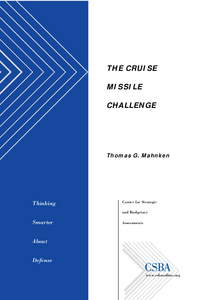
The growth of foreign ballistic missile arsenals has received considerable attention in recent years. Less noticed has been the spread of increasingly capable cruise missiles. The 2003 Iraq War showed that while the United States has made strides in protecting its forces against ballistic missiles, it has placed far less effort on addressing the threat posed by cruise missiles. While US and Kuwaiti Patriot theater ballistic missile defense (TBMD) batteries intercepted and destroyed all nine Iraqi ballistic missiles launched at military targets, they failed to detect or intercept any of the five HY-2/CSSC-3 Seersucker cruise missiles launched against Kuwait. One came close to hitting Camp Commando, the US Marine Corps headquarters in Kuwait, on the first day of the war. Another landed just outside a shopping mall in Kuwait City. The missiles also contributed to fratricide, causing the loss of two coalition aircraft and the death of three crewmembers.
The growth of foreign cruise missile capabilities should be of concern to the United States. The cruise missile threat is a component of three of the six operational challenges that the 2001 Quadrennial Defense Review identified as driving the transformation of US forces.



























